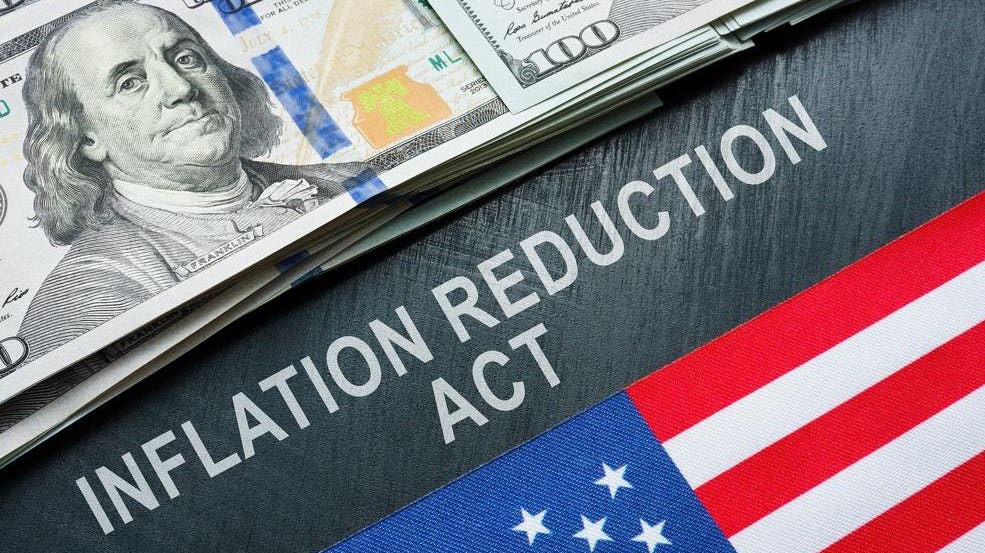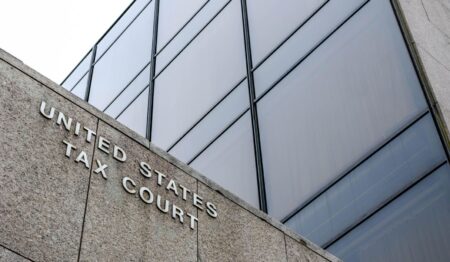This opinion piece puts the transferability component of the Inflation Reduction Act’s (IRA, P.L. 117-169) energy tax credit changes into historical context. A musical accompaniment is necessary to properly set the stage. Since readers probably shouldn’t play YouTube clips at work, we’ll have to rely on memories here.
It’s 1924, and a group of young men in white shorts and white shirts embroidered with Union Jacks are running through the surf and getting spattered with mud on an overcast day in the United Kingdom. A synthesizer trumpet sounds, and then the pulsating notes of Vangelis’s famous title sequence in Chariots of Fire begin. Your recollection of the Academy Award-winning score will have to take it from there. The film was released in the United States in the fall of 1981, shortly after President Ronald Reagan took a victory lap after signing into law the massive tax cuts he promised on the campaign trail.
The story in Chariots of Fire is told in flashbacks and section 6418 is something of a flashback too. The Economic Recovery Tax Act of 1981 (ERTA) holds many distinctions, including being one of the largest tax cuts in U.S. history, but one of its less-heralded innovations — and the one that is relevant to the implementation of the energy credits in the IRA — is that it introduced a safe harbor for leases so that taxpayers who could not use the depreciation and investment credits associated with owning qualified property could transfer those benefits to taxpayers who could use them. This of course is similar in purpose to the IRA’s section 6418, which allows taxpayers who don’t owe tax to sell their credits to someone who does.
But history tells a rather chilling tale of what happened next. A year later, in the 1982 Tax Equity and Fiscal Responsibility Act, Congress made an abrupt turn that first reduced and then repealed safe harbor leasing. Can the ability to transfer credits in the IRA avoid a similar fate?
The history of safe harbor leasing is similar to the development of transferability. The idea behind safe harbor leasing was to encourage investment in capital assets, just as transferability is supposed to encourage the development of clean energy technology. It did this by loosening the requirements for a sale and leaseback transaction to be treated as a lease for tax purposes (even if it isn’t one in substance) and by allowing taxpayers to elect safe harbor treatment, thereby enabling the more efficient transfer of tax benefits. Before the ERTA, tax benefits were transferred through leasing transactions.
The assistant secretary for tax policy, John Chapoton, explained, “Without these changes in the law, leasing transactions would still have increased greatly, but the user would have lost too much of the benefits through transaction costs.” (Richard J. Bronstein and Alan S. Waldenberg, “The Short Life and Lingering Death of Safe Harbor Leasing,” 69(12) Am. Bar Assoc. J. 1845 (Dec. 1983).) Of relevance to the IRA provision, the Reagan administration considered the possibility of allowing the sale of tax benefits, but it was considered administratively impossible to police, according to Bronstein and Waldenberg.
The safe harbor leasing experiment didn’t always reduce the inefficiencies of leasing transactions. Bronstein and Waldenberg noted that lessors sought to protect themselves from the risk of the safe harbor leasing requirements not being met and disqualifying events such as bankruptcy, which resulted in “complex security arrangements, resulting in substantial transaction costs.”
The revenue costs were substantial too. According to an IRS analysis, the value of safe harbor property leased during 1981 exceeded $22 billion. That represented 19,326 leases. Bronstein and Waldenberg pointed out that news stories reported on the use of purchased tax benefits by General Electric
GE
In February 1982 then-Senate Finance Committee Chair Robert J. Dole, R-Kan., began a campaign to eliminate or limit the transfer of tax benefits through safe harbor leasing. Dole had been chair of the committee when the ERTA was passed.
Congressional displeasure with the new provision resulted in the enactment of major limitations on safe harbor leasing in September 1982 that included general retroactive limitations on leases entered into after July 1, 1982, and specific provisions that were retroactive to February 19, 1982. The Senate Finance Committee’s report on H.R. 4961 estimated that the changes to safe harbor leasing would increase revenues by $1.1 billion in 1983, $2.9 billion in 1984, and $4.2 billion in 1985.
The Senate Finance Committee explained that Congress had tried to alleviate distortions in economic behavior caused by the tax system, but it admitted that “it is also possible for economic distortions to result from overly generous tax incentives.” The example that the committee report began with was safe harbor leasing. “Such treatment can encourage businesses to purchase equipment which would not be profitable on a pre-tax basis,” the report noted.
The committee was concerned “that the present safe-harbor rules have enabled some taxpayers to avoid their equitable share of tax,” and it identified situations in which the safe harbor lease provision was used to increase benefits not associated with investments in machinery and equipment, such as percentage depletion. But the real culprit in the committee’s eyes might simply have been that some taxpayers used safe harbor leasing transactions to “avoid any payment of any tax and to generate tax refunds.”
The result was a law that effectively repealed safe harbor leasing but added new “finance leases” that reinstated the pre-ERTA leasing requirements, including economic substance, with exceptions to allow purchases of the property by the lessee at the end of the lease for less than fair market value and to permit leases of limited-use property. Bronstein and Waldenberg wrote that the safe harbor leasing episode was regrettable because it might have resulted in a simplification of the pre-ERTA leasing rules, which would have been useful, but instead, they said, “We now have needless complexity and preferential rules.”
The safe harbor leasing debacle can be understood as an experiment in ignoring economic substance, which distinguishes it from the IRA’s introduction of credit transfers. In the ERTA, Congress tested the possibility that form alone would be sufficient and found it lacking as a means to prop up the economy, not because taxpayers failed to respond but because they responded too enthusiastically. The IRA has the same potential problem.
But while there is an obvious economic reason for the hasty retreat from safe harbor leasing — it was too expensive — there’s also a philosophical reason: Congress’s action in 1982 demonstrated that it had gained a greater appreciation of the problem.
It’s not a good idea to get taxpayers into the habit of presenting their affairs to the IRS so that the substance of what they are doing bears little to no relation to the purported form. As the Senate Finance Committee pointed out, the derivative effects of laws like safe harbor leasing “erode respect for and compliance with the tax laws on the part of other taxpayers.”
The IRA’s ambitious experiment in clean energy financing is approaching the starting line. Where section 6418 finishes may depend in large part on guidance that the IRS and Treasury have promised will be released soon.
Read the full article here













